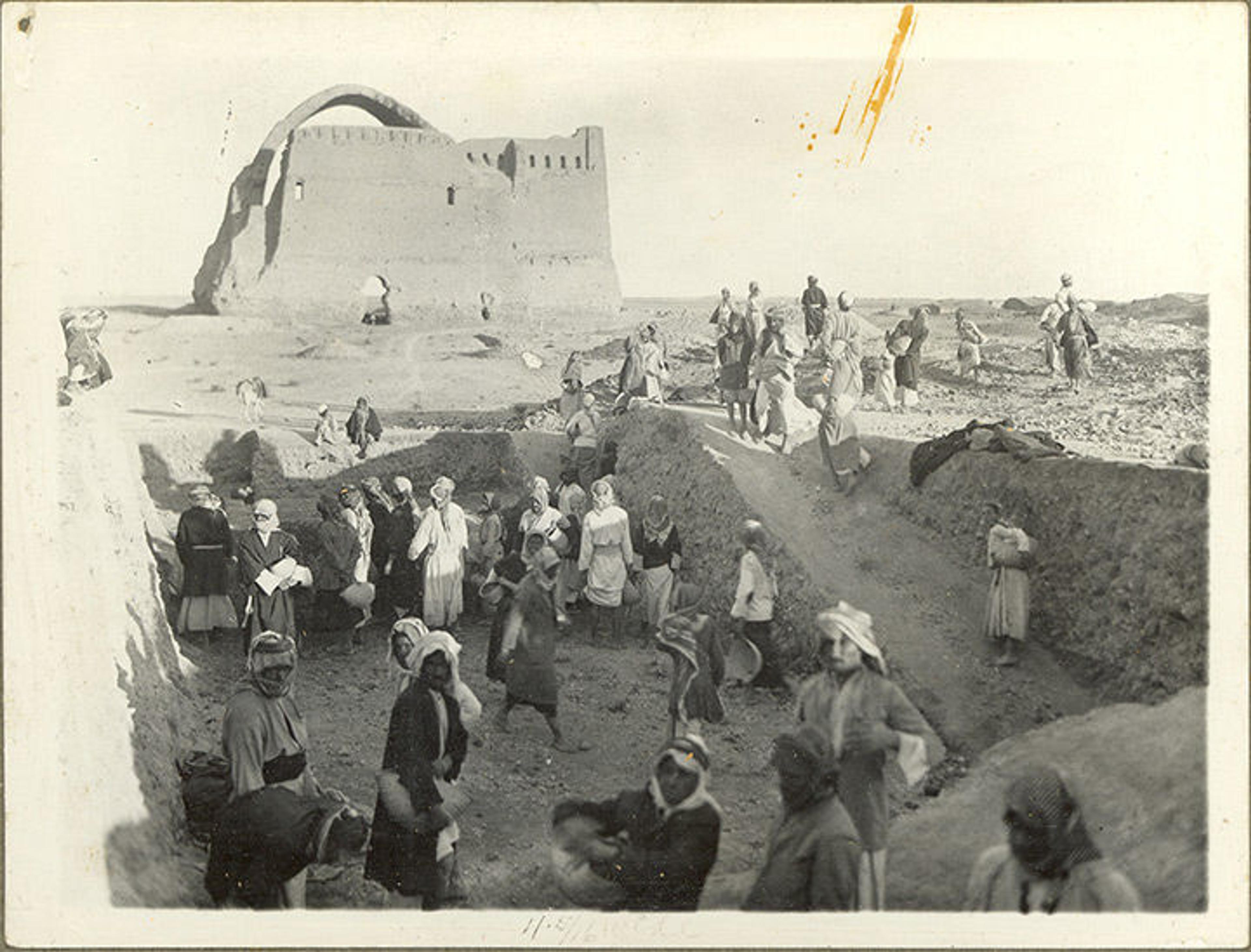
Excavations of the West Mound of the Taq-i Kisra at Ctesiphon, view from the west. Joint Expedition of the German State Museums, Berlin, and The Metropolitan Museum of Art, 1931–32
«On November 4, 1931, excavators led by scholars from The Met and the German State Museums in Berlin began digging through the ruins of Ctesiphon, an ancient city near the Tigris River some 20 miles outside Baghdad. The project, which included around 500 workmen, was led by the German art historian Ernst Kühnel, who oversaw a crew that included Walter Hauser and Joseph M. Upton, both of whom came from The Met. It was the Museum's first expedition into the Near East and led to the acquisition of more than 460 objects for The Met collection.»
The works were acquired through a system of "partage." "Under the law, an Iraqi representative could select any pieces from the excavation for the Iraq Museum, and the remaining finds would be divided in half," writes Caitlin Chaves Yates, a Mellon Curatorial Fellow in the Department of Near Eastern Art, in a new Timeline of Art History essay on the Museum's Ctesiphon expedition. "In practice, the Western excavation teams usually benefited from favorable divisions and were able to keep fifty percent of the finds."
The expedition at Ctesiphon was a landmark Museum undertaking. Since that initial project, The Met has helped fund, or participated in, the exploration of more than 30 sites across the Near East. Among them have been digs at Nimrud, Nineveh, and a series of explorations of Nishapur. No wonder Upton looked back on his time in Ctesiphon and remarked that it "more than repaid the efforts and funds expended."[1]
The entirety of Chaves Yates's essay, along with more than 1,000 others spanning the full range of the Museum's collection, is available on our Heilbrunn Timeline of Art History.
Notes
[1] Joseph M. Upton, "The Expedition to Ctesiphon, 1931–1932," Bulletin of The Metropolitan Museum of Art 27, no. 8 (August 1932): 197.